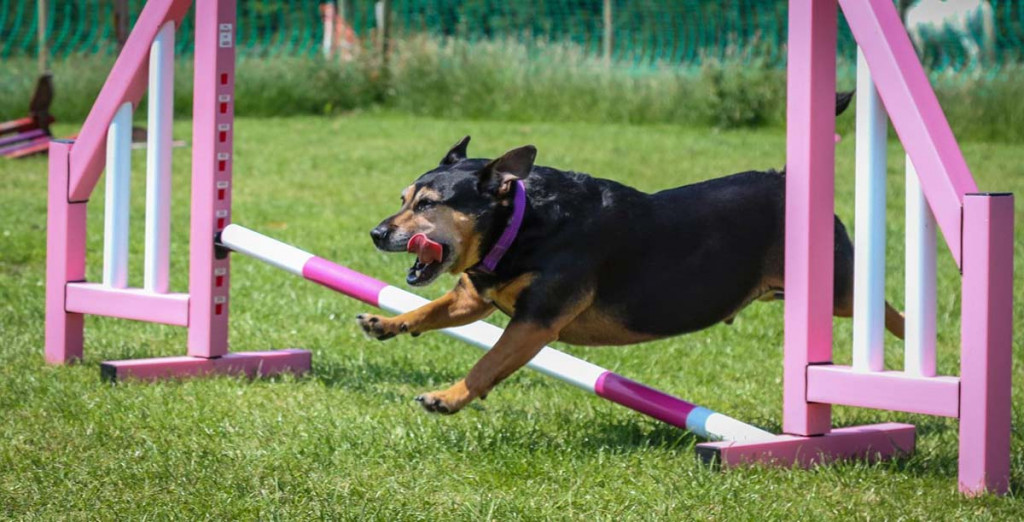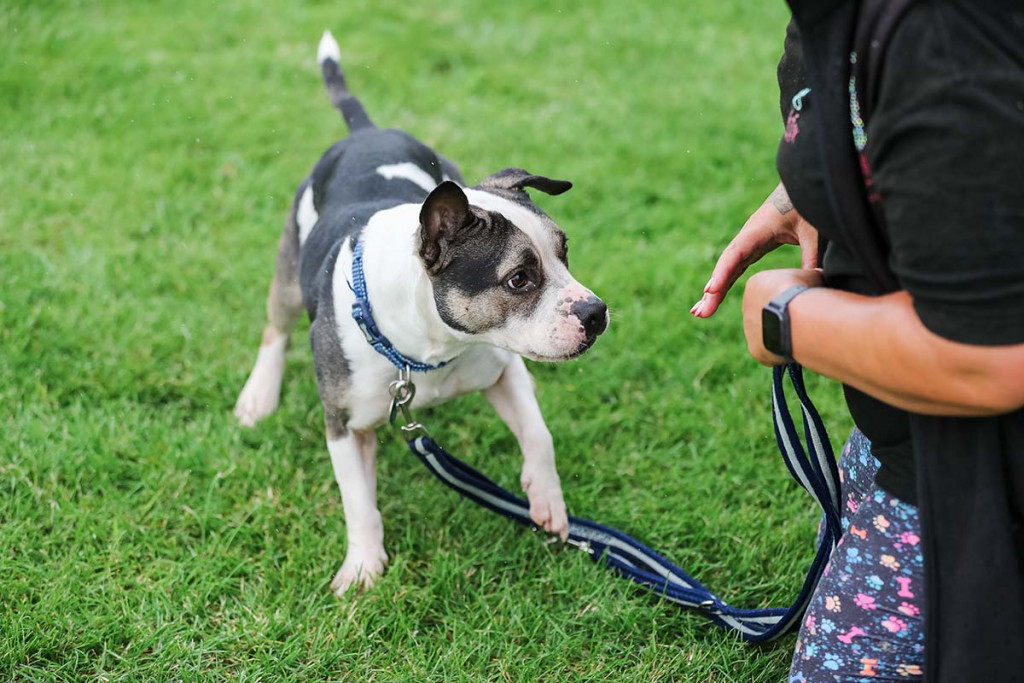Building Your First Dog Agility Starter Kit

Start Training at Home
Building your own dog agility starter kit is a fantastic idea if you want to have fun and keep your dog active. Agility training at home is an excellent way to improve your dog’s fitness, coordination and mental stimulation.
Plus, it’s a great way to bond.
This article will guide you through building your first dog agility starter kit. From DIY setups to choosing the right equipment and setting up at home, we’ll cover everything you need to know. So, grab your pup, and let’s get started!
Starting With DIY Equipment
Getting started with dog agility training doesn’t have to break the bank. You can quickly whip up beginner exercises with items you already have lying around the house.
You can ease your dog into the art of jumping by constructing some simple proprioception games. Proprioception is the body’s awareness of its position in space – in dog terms, it means your dog knows where their limbs are and is learning to control their body movements.
I don’t advise encouraging your dog to jump without first knowing their age. But you can start training them to get safely over a jump bar by placing a piece of guttering upside-down on the floor and encouraging your dog to walk (not run) over it.
This exercise teaches your dog about its own body and that they do have four legs! Dogs live very much in the moment and tend to be aware of their heads, shoulders and front legs. But their rear end? Not so much.
Have you ever witnessed your dog break wind and then jump around, not knowing where the noise and smell came from? That’s because they often forget they have a back end.
Walking slowly over a piece of guttering will educate your dog’s nervous system about where the rest of their body is and that they own four paws. Upturned guttering won’t move or injure your dog if they trip or step on it.
Encouraging your dog to navigate through a tunnel might need some practice, yet assembling one is straightforward. You can transform a large cardboard box into a tunnel by removing its ends or create a makeshift one with a blanket over some chairs.
Once your dog has mastered these exercises, encourage them to walk around a laundry basket. This exercise will get them used to turning and prepare them later when encountering wing wraps.
This should keep you going for a while, but when your dog has conquered your DIY exercises, it might become time to buy some dedicated agility kit.
Purchasing the Right Agility Equipment for Your Dog
One of the most important steps is selecting equipment that’s appropriate for your dog. Garden-sized equipment may be smaller than standard equipment, so consider your dog’s breed, size and overall physical abilities before making any purchases, or ask your trainer for advice.
Agility equipment includes jumps, tunnels and weave poles. When choosing these, make sure to buy sturdy, durable equipment that can withstand your dog’s energy and movements.
Additionally, adjustable equipment is great because you can modify it as your dog progresses in training.
It’s essential to take your dog’s safety into account. Opt for equipment designed specifically for dog agility and that meets safety standards. Always remember your dog’s physical limitations to prevent any injuries during training.
Sara’s Dog Training Creations and Dog Agility Thing produce equipment to be used at home.

Setting Up Your Dog Agility Pieces at Home
Once you have the necessary equipment, it’s time to set up.
Agility training at home is more concerned with mastering single pieces of equipment. A dog needs a good understanding of how to tackle each piece before chaining the behaviours/obstacles together.
Think about the surface on which you are setting up your equipment. Grass or carpet can provide good traction for your dog. If you’re setting up indoors, ensure the flooring is non-slip to prevent accidents. Never set up on wood or laminate flooring or concrete.
Additionally, to create a visually stimulating environment, you can add some colourful markers or flags.
Safety Precautions to Consider in Agility Training
While agility training can be loads of fun, it’s essential to prioritise safety. Before starting any training session, ensure your dog is warmed up to prevent muscle strains or injuries.
Always supervise your dog during agility training to ensure they use the equipment correctly. Keep an eye out for any signs of exhaustion or discomfort. If your dog seems tired or disinterested, take a break and try again later.
As mentioned, keep in mind the surface on which the agility equipment will be placed. Ensure surfaces are non-slip to prevent any accidents or injuries. Grass, turf or rubberised matting are popular choices for agility training as they provide good traction for your dog’s paws.
It’s also important to consider your training environment. Ensure the area is free of hazards such as sharp objects and avoid training in extreme weather conditions. A safe and secure training space will help prevent accidents and injuries.
Incorporating variety into your agility training routine can also help keep your dog engaged and motivated. Once your dog is confident on a piece of equipment, you can slowly introduce new obstacles.
Alternatively, you can challenge their understanding of a piece of kit by changing elements, such as your distance away from them, the duration required, or the level of distractions.
You can also adjust the training schedule to keep things interesting. This challenges your dog physically and mentally and prevents boredom and burnout.
Training Tips for Beginners in Dog Agility
For beginners in dog agility training, it’s important to start with the basics. Teach your dog simple commands like “sit,” “stand,” and “down” before introducing them to the agility equipment.
Gradually introduce each piece of equipment and help your dog become familiar with it. Before tackling jumps, you should seek the guidance of an instructor, and then start with low jumps and gradually increase the height as your dog gains confidence. Also practice being at a distance from each piece of equipment.
Remember to be patient and supportive throughout the training process. Dogs learn at different paces, so it’s important not to rush or push your dog too hard. Recognise and celebrate every small achievement, no matter how insignificant it may seem.
Reward Effort and Not Perfection
As your dog progresses in their agility training, celebrate their milestones along the way. Whether it’s successfully completing a challenging obstacle or improving their overall agility skills, reward and applaud their efforts and achievements.
By following these guidelines, you can create an engaging and effective home agility training experience for both you and your dog.
If you'd like to book a taster session to see whether you and your dog would enjoy dog agility, check out our Events page for details of our next sessions.

